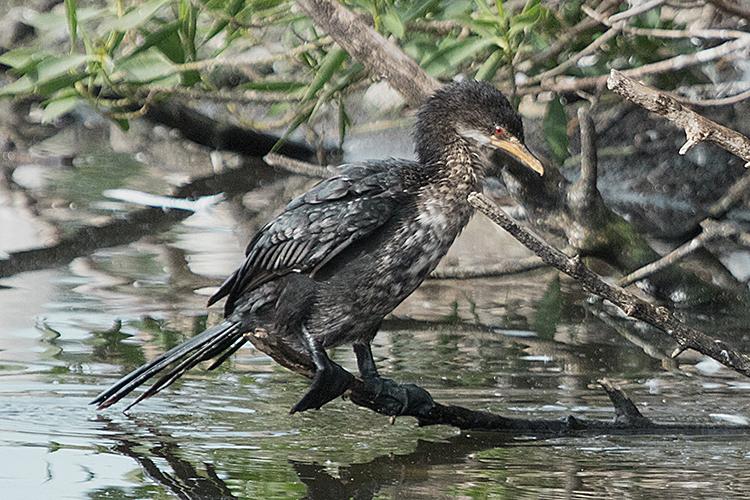Reed Cormorant

Bo-Langvlei, Wilderness, South Africa
The reed cormorant is a common and widespread resident in much of Sub-Saharan Africa and in Madagscar. There is some seasonal movement. it prefers freshwater habitats with thick vegetation where there is slow moving or still water although also found in sheltered coastal waters and flooded areas. ded areas. t can be found solitarily or in small flocks outside the breeding season. However, they aggregate to communal roosts in larger groups, and their flight is easily noticeable over coastal mangroves and rivers at night.
Feeding
Although able to dive to considerable depths, the reed cormorant usyally feeds in shallower waters. Slow-moving fish with long, thin bodies, including catfish and cichlids, are preferred prey. it also hunts frogs, aquatic invertebrates crabs and even small birds.
Breeding
Reed cormorants pair for life. They breed in colonies with other birds including egrets and herons. Nests are built on reedbeds, in tree branches overhanging water and very occasionally on the ground on sites selected by the males. These birds prefer water bodies with ample vegetation and budding trees for nesting. Both males and females incubate the clutch of three to four eggs.
Reed Cormorants are monogamous and will form life-long bonds with their partners. They can be seen breeding colonially with other birds, such as egrets, herons, and darters. Breeding season differs depending on the range, and egg-laying may occur throughout the year, peaking between October to April in sub-Saharan Africa.
The male reed cormorant selects the nesting ground. A typical courtship antic includes moving its head back and forth while beating its wings. The nest is often built on large reedbeds, tree branches over waters, and rarely on the ground. Nest materials used are sticks, dead reeds, lined with grass and leaves.
Wildfile Extras
- Reed Cormorants’ population has grown as a result of increased open water from dam construction.
- Reed cormorants are killed because they reduce fish stocks.